Michael J. Behe's Blog, page 535
January 24, 2019
Plants can both “smell” and “hear”
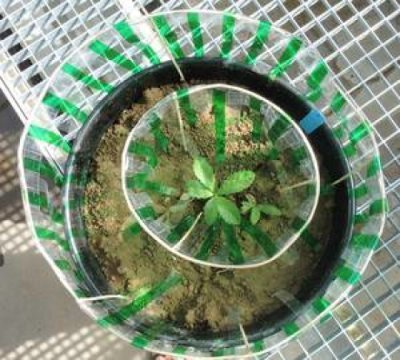 Plant assessing surroundings: In an experiment, Potentilla reptans grows tall, wide, or shade-tolerant, depending on what neighbors (simulated by varying stripes) do/Udi Segev
Plant assessing surroundings: In an experiment, Potentilla reptans grows tall, wide, or shade-tolerant, depending on what neighbors (simulated by varying stripes) do/Udi SegevHow? Smell: From ScienceDaily:
Plants detect a class of odor molecules known as volatile organic compounds, which are essential for many plant survival strategies, including attracting birds and bees, deterring pests, and reacting to disease in nearby plants. These compounds also give essential oils their distinctive scents.
Touhara’s team exposed tobacco cells and 4-week-old tobacco plants to different volatile organic compounds. They discovered that odor molecules change gene expression by binding to other molecules called transcriptional co-repressors that can turn genes on or off.
In plants, the odor molecules must move into the cell and accumulate before they affect plant behavior. In animals, odor molecules are recognized by receptors on the outside of cells in the nose and immediately trigger a signaling pathway to recognize the odor and change behavior.
“Plants can’t run away, so of course they react to odors more slowly than animals. If plants can prepare for environmental change within the same day, that is probably fast enough for them,” said Touhara.
Speed is unnecessary for plants, but they may be able to recognize a much greater variety of odor molecules.
“Humans have about 400 odor receptors. Elephants have about 2,000, the largest number in animals. But based on how many transcription factor genes are in plants, plants may be able to detect many more odors than animals,” said Touhara. Paper. (open access) – Ayumi Nagashima, Takumi Higaki, Takao Koeduka, Ken Ishigami, Satoko Hosokawa, Hidenori Watanabe, Kenji Matsui, Seiichiro Hasezawa, Kazushige Touhara. Transcriptional regulators involved in responses to volatile organic compounds in plants. Journal of Biological Chemistry, 2018; jbc.RA118.005843 DOI: 10.1074/jbc.RA118.005843 More.
One wonders whether plants could be used to detect CO or other toxic gases and send signals accordingly. But would they be fast enough?
Sound is so elemental to life and survival that it prompted Tel Aviv University researcher Lilach Hadany to ask: What if it wasn’t just animals that could sense sound—what if plants could, too? The first experiments to test this hypothesis, published recently on the pre-print server bioRxiv, suggest that in at least one case, plants can hear, and it confers a real evolutionary advantage.
Note: “ … and it offers a real evolutionary advantage.” What if the writer had just said, “ … and it offers a real advantage.”?What is “evolutionary” doing in that sentence?
Hadany’s team looked at evening primroses (Oenothera drummondii) and found that within minutes of sensing vibrations from pollinators’ wings, the plants temporarily increased the concentration of sugar in their flowers’ nectar. In effect, the flowers themselves served as ears, picking up the specific frequencies of bees’ wings while tuning out irrelevant sounds like wind.Michelle Z. Donahue, “Flowers can hear buzzing bees—and it makes their nectar sweeter” at National Geographic
Hadany describes herself as an “evolutionary theoretician,” which probably explains the verbiage, which just sits there in the sentence even though we have no idea of the details of how the plants came to have the facility for picking up sounds that she describes.
“We were quite surprised when we found out that it actually worked,” Hadany says. “But after repeating it in other situations, in different seasons, and with plants grown both indoors and outdoors, we feel very confident in the result.” Michelle Z. Donahue, “Flowers can hear buzzing bees—and it makes their nectar sweeter” at National Geographic
So picking up the plant hearing easily was a surprise to the team too, despite the evolution theorizing? The theory has no predictive value then?
The team did a great piece of work on plant hearing. But so much language around “evolution” is just clutter, creating the impression that we know things we really don’t. And sometimes that gets in the way of understanding what we see now in real time.
Apparently, the fact that so many flowers are bowl-shaped helps amplify the sound of insects.
See also: Darwinism impedes understanding of plant communications
Can plants be as smart as animals?
Plants are not people but maybe they hear things (2012)
and
Is salad murder? If we think plants are “equal organisms” with respect to humans, it’s not clear whether salad is or isn’t murder. Or whether murder is even a serious ethical problem.
Follow UD News at Twitter!
Copyright © 2019 Uncommon Descent . This Feed is for personal non-commercial use only. If you are not reading this material in your news aggregator, the site you are looking at is guilty of copyright infringement UNLESS EXPLICIT PERMISSION OTHERWISE HAS BEEN GIVEN. Please contact legal@uncommondescent.com so we can take legal action immediately.
Plugin by Taragana
Darwinism challenged as explanation for finch beaks
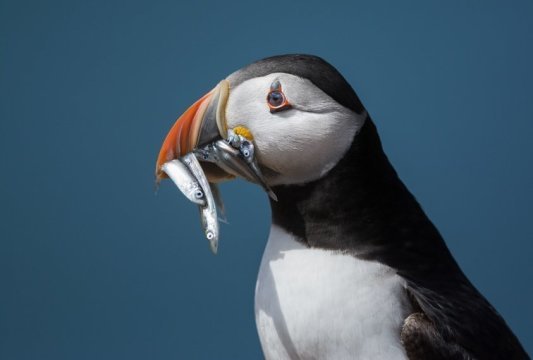 From ScienceDaily:
From ScienceDaily:
The observation that Galapagos finch species possessed different beak shapes to obtain different foods was central to the theory of evolution by natural selection, and it has been assumed that this form-function relationship holds true across all species of bird. (photo at right: puffin finds a use for sand eels,/Stef Bennett, Fotolia)
However, a new study published in the journal Evolution suggests the beaks of birds are not as adapted to the food types they feed on as it is generally believed.
An international team of scientists from the United Kingdom, Spain and the US used computational and mathematical techniques to better understand the connection between beak shapes and functions in living birds.
By measuring beak shape in a wide range of modern bird species from museum collections and looking at information about how the beak is used by different species to eat different foods, the team were able to assess the link between beak shape and feeding behaviour.
Professor Emily Rayfield, from the University of Bristol’s School of Earth Sciences, and senior author of the study, said: “This is, to our knowledge, the first approach to test a long-standing principle in biology: that the beak shape and function of birds is tightly linked to their feeding ecologies.” Paper. (paywall) – Sam Van Wassenbergh, Simon Baeckens. Evolution of shape and leverage of bird beaks reflects feeding ecology, but not as strongly as expected. Evolution, 2019 DOI: 10.1111/evo.13686
More.
Actually, it doesn’t matter what’s true about Darwin’s finches at all. They are a Textbook Icon of Evolution, demonstration natural selection (Darwinism). Now they have even been raised to the status of zombies in school systems:
Call: Evolution!
Response: Darwin’s finches!
Congratulations, you just PASSED the Evolution section in Biology class! 20% of your mark! Just think of all you don’t need to know now…
It may be worth keeping in mind that eating is central to an animal’s staying alive. We might expect that birds would adapt, to whatever extent they can, to foods not especially suited to their beaks when the alternative is starvation. A study of urban wildlife whose ecology revolves around dumpsters and bird feeders will likely provide much evidence for that. See “Can cities serve as cauldrons of evolution (speciation)?”
See also: Researchers: Darwin’s Finches Not Typical Example Of Evolution At All
and
Darwin’s finches not a good example of Darwinian evolution, but of hybridization
Follow UD News at Twitter!
Copyright © 2019 Uncommon Descent . This Feed is for personal non-commercial use only. If you are not reading this material in your news aggregator, the site you are looking at is guilty of copyright infringement UNLESS EXPLICIT PERMISSION OTHERWISE HAS BEEN GIVEN. Please contact legal@uncommondescent.com so we can take legal action immediately.
Plugin by Taragana
January 23, 2019
Oldest animal turns out to be 40 million years older than 558 mya
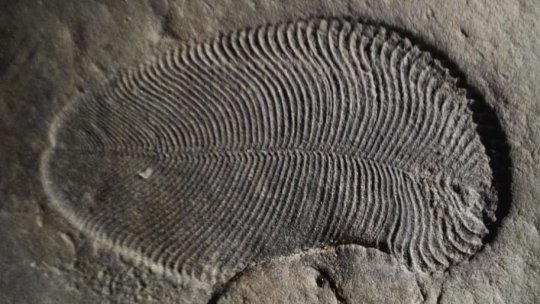 Dickinsonia/Australian National University
Dickinsonia/Australian National UniversityFound last year but not yet named, the animal may have been one of the “comb jellies”:
MOVE over, Dickinsonia. This 558-million-year-old creature was named the earliest known animal last year, but New Scientist can now exclusively reveal one that existed even earlier – by more than 40 million years. (paywall) Graham Lawton, “Exclusive: 600-million-year old blobs are earliest animals ever found” at New Scientist
Note: They are described at New Scientist above as “carnivorous comb jellies” but all known comb jellies are carnivorous so it will be interesting to learn more about what that “earliest known animal” was eating.
Last year, we learned Intro:
A strange soft-bodied sea creature that lived over half a billion years ago may have been the first animal species on Earth, fossil evidence suggests.
The first large complex organisms – known as the Ediacarans – appear in the fossil record about 570 million years ago, just before the Cambrian explosion of modern animal life. Their alien body shapes have created confusion over whether they were primitive animals, other complex lifeforms like lichen or giant amoebas, or failed experiments of evolution. Alice Klein, “Earliest known animal was a half-billion-year-old underwater blob” at New Scientist 20 September 2018
Finding fats has been taken as good evidence that these ancient life forms were animals. The expression “failed experiments of evolution” is curious. Was the tyrannosaur a “failed experiment” of evolution? Or just something that had its day and is gone because the ecology changed after the asteroid hit and that size of predator just wasn’t a part of it any more? Keep the file open.
See also:Fats recovered from Ediacaran fossil, 558 mya, shows that animals then were “large,” “abundant”
Follow UD News at Twitter!
Copyright © 2019 Uncommon Descent . This Feed is for personal non-commercial use only. If you are not reading this material in your news aggregator, the site you are looking at is guilty of copyright infringement UNLESS EXPLICIT PERMISSION OTHERWISE HAS BEEN GIVEN. Please contact legal@uncommondescent.com so we can take legal action immediately.
Plugin by Taragana
Mike Behe on how to tell if scientists are exaggerating

In connection with his forthcoming book, Darwin Devolves, he asks a challenging question: What kinds of answers can Darwinian evolution really provide?
What can the theory account for? If it can’t explain even color patterns, how much has it been exaggerated? Quite a bit, it turns out. To see the problem more clearly, let’s first think about studies of human nutrition. For decades the public was told to avoid foods with a lot of cholesterol. Recently, however, a government panel changed its mind, saying there’s no evidence that’s harmful. Here’s the problem for grand claims about evolution. Science can’t tell if cholesterol is bad for modern humans, who can be studied in great detail. Yet if that’s too hard, then how can science claim to know what affected plants and animals in the distant past? Ones that can’t be studied in real time like people? Ones that encountered myriad environmental influences over millions of years? That’s easy to answer: Science can’t and doesn’t know.Michael J. Behe, “Here’s how to tell if scientists are exaggerating” at The Stream
He introduces the “Principle of Comparative Difficulty” (PCD) to help us assess what to believe: “If nutritionists can’t easily determine how one dietary factor affects human health, evolutionary biologists can’t tell what affected the survival of long dead animals.”
Watch them bluster otherwise. A lot depends on what counts as an “explanation.” If what counts is “sounding like science,” they can explain anything. If what counts is adding to a correct understanding, no.
Note: A similar claim is “Being an addict might be an evolutionary advantage” Pop psychology at its purest is somehow transformed into science by the magical word “evolution.”
See also: Mike Behe’s New Book, Darwin Devolves: “Absolutely Convincing” Or “Omits Contrary Examples”
and
A Peek At Mike Behe’s New Book Darwin Devolves
Follow UD News at Twitter!
Copyright © 2019 Uncommon Descent . This Feed is for personal non-commercial use only. If you are not reading this material in your news aggregator, the site you are looking at is guilty of copyright infringement UNLESS EXPLICIT PERMISSION OTHERWISE HAS BEEN GIVEN. Please contact legal@uncommondescent.com so we can take legal action immediately.
Plugin by Taragana
Darwinism at work: Being an addict might be an evolutionary advantage
Here’s a marvellous example, from a behavioral neuroscientist, of the way Darwinism simply follows popular culture without adding anything to it:
It’s nearly impossible to imagine, but there could be an evolutionary advantage to the addictive tendencies that cause many to throw away relatively safe and undisrupted lives to walk on addiction’s perilous ledge. As a former addict who is now a psychology and neuroscience professor at Bucknell University, I’ve dedicated my life’s research to learning the root causes of addiction…
A core attribute of addictive drugs is that they are neurologically newsworthy, and for sensation-seekers, they may satisfy a craving like scratching an itch. Though a tendency to spend the rent money on a transient solution to boredom might be hard to fathom as a parent or partner of such an individual, from an evolutionary perspective, such tendencies may be a real asset. The population benefits by having a mixed pool of risk-averse and risk-seeking individuals—some to caution us to remain secure in what’s familiar, and others eager for the unknown. Which is better for survival clearly depends upon the particular conditions; at least some of us will survive if the group expresses tendencies toward both strategies. Judy Grisel, “The Evolutionary Advantages of an Addictive Personality” at Scientific American
First, good for Grisel that she is getting her life together and thanks to her or sharing! May all addicts do the same.
Now, as to her thesis, if we left out the gunk about evolution, what would we have? Instead of
Though a tendency to spend the rent money on a transient solution to boredom might be hard to fathom as a parent or partner of such an individual, from an evolutionary perspective, such tendencies may be a real asset.
we would have
Though a tendency to spend the rent money on a transient solution to boredom might be hard to fathom as a parent or partner of such an individual… such tendencies may be a real asset.
No. The existence of groups like Al-Anon and Adult Children of Alcoholics is testimony to the “real asset’s” real outcome: destruction.
Her basic thesis is that, because we don’t lead such exciting lives today, addicts ingest harmful substances instead. Maybe.
One can almost hear a local addiction recovery group chuckling quietly in the background. If we had all appeared a millennium ago on a deserted planet, some people would still get hooked on substances. Few of them show much creativity as a result — except maybe in finding different ways to be sick or die. People recover when they decide that wellness is worth the struggle. If that idea (recovery) evolved at all, it must have evolved a long time ago, when we didn’t notice.
And if we had all come into existence a millennium ago, that’s be the supposed reason some people wreck their lives by addiction: lack of rootedness, not knowing one’s background, etc. There is always a culturally comprehensible reason; count on it.
Note, however, that nonsense becomes apparent sense once the concept of “evolution” is thrown in. That’s what has become of Darwinism today (which is what people like Grisel mean by “evolution”—guys running around, throwing spears on the savannah). No other theory in evolution (convergence. horizontal gene transfer, hybridization, epigenetics, stasis) attracts this load of pop psych. Is there more hard math involved in the less popular theories? More need for actual evidence?
See also: Here’s A Bunk Detector For “Evolution” Claims From Therapists And Counsellors
and
“The evolutionary psychologist knows why you vote — and shop, and tip at restaurants”
Follow UD News at Twitter!
Copyright © 2019 Uncommon Descent . This Feed is for personal non-commercial use only. If you are not reading this material in your news aggregator, the site you are looking at is guilty of copyright infringement UNLESS EXPLICIT PERMISSION OTHERWISE HAS BEEN GIVEN. Please contact legal@uncommondescent.com so we can take legal action immediately.
Plugin by Taragana
Scientific racism and the Tree of Life
A scout sends us this:
William K. Gregory (1876–1970)
Our Face from Fish to Man: A Portrait Gallery of our Ancient Ancestors and Kinsfolk Together with a Concise History of our Best Features
New York, London: G. P. Putnam’s Sons, 1929
“Written in the aftermath of legislation outlawing the teaching of evolution in some American states, this book exploits the fascination of transatlantic readers with their own faces to draw them into a sophisticated account of the development of the vertebrate head. The author, a leading naturalist at the American Museum of Natural History in New York, ends by speculating on what the face of the white race will look like in a million years if attempts at eugenic purification are successful.”
First, the good news: No one with any social standing takes this kind of thing seriously any more. Now the bad news: What difference has it made in our understanding of our ancestors?
Consider, for example, the role that racism played in assessing the evidence around Neanderthal man.
Darwin Day is, once again, just around the corner (Tuesday, February 12). In the United States:
While the celebration of Charles Darwin’s life and work has been done sporadically since he died in 1882, it would be many years before an official holiday commemorating him would be created. Over the years it was recognized by numerous groups of scientists, academics and by universities all over the globe. In the United States, it was made an official holiday due to House Resolution 67 which designated February 12 as Darwin Day in the United States in 2015. More.
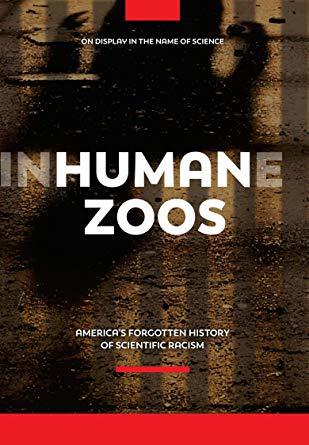
Lincoln’s birthday is the same day. Popular fluff often links the two. Sometimes for political reasons. Wikipedia’s Darwinists have even written fiction about Darwin’s influence on Lincoln. But then Darwinians are probably covered by the cosmologists’ “the artistic license to lie.”
Hey, it’s the Narrative, right? What else matters to them?
See also: Was Neanderthal man fully human? The role racism played in assessing the evidence
Neil deGrasse Tyson’s Cosmos and “the artistic license to lie” One thing readers may not know is that, in a series that leaned heavily on the supposed conflict between religion and science, obvious and widely noted misrepresentations were excused in the service of a “greater truth”
and
If The Social Justice Warriors Got Rid Of Darwinian Racism, They Might Do Some Good After All
Follow UD News at Twitter!
Copyright © 2019 Uncommon Descent . This Feed is for personal non-commercial use only. If you are not reading this material in your news aggregator, the site you are looking at is guilty of copyright infringement UNLESS EXPLICIT PERMISSION OTHERWISE HAS BEEN GIVEN. Please contact legal@uncommondescent.com so we can take legal action immediately.
Plugin by Taragana
January 22, 2019
New type of blood vessel discovered, hidden in bones
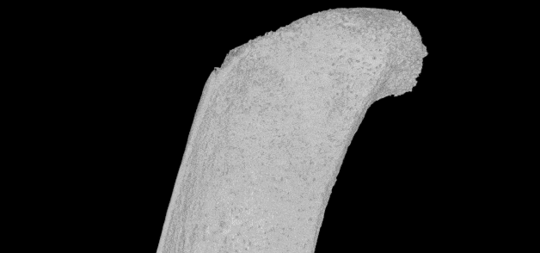
(Grüneboom et al./Nature Metabolism)
It might require researchers to rethink basic structure and function of the skeleton:
In a new study, researchers in Germany report finding a previously undetected network of fine blood vessels that act like a secret tunnelling system inside bone, helping blood and immune cells spread efficiently and rapidly throughout the body… Gunzer was studying fluorescent-dyed blood cells in mice, and observed them under the microscope appearing to pass through what should have been solid bone.
Unable to discover anything in medical literature that could explain the phenomenon, he devised a new research project to explore what was going on. Peter Dockrill, “A Totally New Type of Blood Vessel Has Been Discovered Hidden in Human Bones” at ScienceAlert
That was smart.
There are other very recent new discoveries as well:
Last year another group found mice have similar capillaries between brain tissue and bone marrow inside the plates that make up their skull . When mice were made to have a stroke or meningitis, immune cells from their skull used this route to reach the brain, presumably responding to the damage. But it’s unknown if people also have these blood vessels in their skull. Clare Wilson, “We’ve discovered a new type of blood vessel in our bones” at New Scientist
We are still finding new, complex, interlocking systems in our bodies and still hearing people like Nathan Lents insist, as in his Human Errors: A Panorama of Our Glitches, from Pointless Bones to Broken Genes, that they are badly designed.
But then why should fact matter so much in the face of fashionable opinion?
See also: “Incredibly Surprising”: New Structure In Human Cells Discovered
and
Mike Behe’s New Book, Darwin Devolves: “Absolutely Convincing” Or “Omits Contrary Examples”
Follow UD News at Twitter!
Copyright © 2019 Uncommon Descent . This Feed is for personal non-commercial use only. If you are not reading this material in your news aggregator, the site you are looking at is guilty of copyright infringement UNLESS EXPLICIT PERMISSION OTHERWISE HAS BEEN GIVEN. Please contact legal@uncommondescent.com so we can take legal action immediately.
Plugin by Taragana
Logic & First Principles 8: Bridging the Wigner MATH-PHYSICS GAP (with help from phase/ configuration/ state space)
In order to conceptually bridge the Wigner MATH-PHYSICS GAP, it is helpful to see how deeply embedded quantitative and structural properties are in the physical world. The phase space approach is helpful, and a vid on how colliding blocks compute digits of pi (under ideal circumstances) will help. The vid:
It helps to look at some screenshots:

In this first shot (from a part 1 vid) we see a setup where we have a frictionless plane with a rigid wall to the left and two masses that collide. On the first hitting the second, it will hit and bounce back (elastically) from the wall. A second collision with the first block follows and rebound from the wall. This will continue until the second block cannot catch up with the first. Amazingly, depending on the mass ratio, the number of collisions between blocks or with the wall will give digits of pi.
Such suggests that there is a hidden circle, and there is, in an associated phase space — which allows us to see the dynamics from a geometric viewpoint in an associated abstract space:

Here, we see blocks moving so that kinetic energy and momentum are conserved. The circle shows constant kinetic energy and the zigzag jumps come from momentum conservation during collision — the vertical one being due to collisions with the wall of effectively infinite mass (rigidity). Due to collisions, they are switching directions and points on the circle on collisions. And, the angle at the centre will be twice that at the circumference standing on the same arc, here marking three successive collisions:

This continues until a critical value is left. It turns out, that this is when the arc-jump around the circle can no longer achieve a critical value:

The result of all this is that we move, depending on mass ratio, from 3 to 31 to 314 collisions and onward. Which computes pi’s digits.
Of course, we have idealised the system to be friction-free. (In the video, clacks are added as an audio effect, with energy conservation there would obviously be no noise.)
We see here how a physical situation (admittedly idealised) obeys laws of physics which were empirically discovered. These reveal a deeply embedded logic of structure and quantity manifest in phenomena of the world. Where, we may freely move to an abstract, phase space which allows further insight and analysis.
In this case, geometry counts.
Counts to the point that an idealised case would allow computation of digits of pi.
Of course, we could not actually build such a system, but the laws we infer from the observed world help us to form abstract model logic worlds that give us insights and which often help us to understand real world cases with friction etc.
Why all of this is possible is because the physical world is governed by logic of being constraints that are structural and quantitative. Laws, that turn out in aggregate to be fine tuned in ways that enable C-Chemistry, aqueous medium, cell based life. END
Copyright © 2019 Uncommon Descent . This Feed is for personal non-commercial use only. If you are not reading this material in your news aggregator, the site you are looking at is guilty of copyright infringement UNLESS EXPLICIT PERMISSION OTHERWISE HAS BEEN GIVEN. Please contact legal@uncommondescent.com so we can take legal action immediately.
Plugin by Taragana
Body plan pushed back hundreds of millions of years
[image error]The vertebrate family tree is all shook up, we hear, by a fossil hagfish (right: Cretaceous hagfish fossil, 100 mya/Tetsuto Miyashita, University of Chicago).
From ScienceDaily:
Paleontologists at the University of Chicago have discovered the first detailed fossil of a hagfish, the slimy, eel-like carrion feeders of the ocean. The 100-million-year-old fossil helps answer questions about when these ancient, jawless fish branched off the evolutionary tree from the lineage that gave rise to modern-day jawed vertebrates, including bony fish and humans.
The fossil, named Tethymyxine tapirostrum,is a 12-inch long fish embedded in a slab of Cretaceous period limestone from Lebanon. It fills a 100-million-year gap in the fossil record and shows that hagfish are more closely related to the blood-sucking lamprey than to other fishes. This means that both hagfish and lampreys evolved their eel-like body shape and strange feeding systems after they branched off from the rest of the vertebrate line of ancestry about 500 million years ago.
“This is a major reorganization of the family tree of all fish and their descendants. This allows us to put an evolutionary date on unique traits that set hagfish apart from all other animals,” said Tetsuto Miyashita, PhD, a Chicago Fellow in the Department of Organismal Biology and Anatomy at UChicago who led the research. The findings are published this week in the Proceedings of the National Academy of Sciences…
“We now have a fossil that can push back the origin of the hagfish-like body plan by hundreds of millions of years,” Miyashita said. “Now, the next question is how this changes our view of the relationships between all these early fish lineages.” Paper. (open access) – Yu-Ting Lai, Carol K. L. Yeung, Kevin E. Omland, Er-Li Pang, Yu Hao, Ben-Yang Liao, Hui-Fen Cao, Bo-Wen Zhang, Chia-Fen Yeh, Chih-Ming Hung, Hsin-Yi Hung, Ming-Yu Yang, Wei Liang, Yu-Cheng Hsu, Cheng-Te Yao, Lu Dong, Kui Lin, Shou-Hsien Li. Standing genetic variation as the predominant source for adaptation of a songbird. Proceedings of the National Academy of Sciences, 2019; 201813597 DOI: 10.1073/pnas.1813597116 More.
Well yes, if this checks out, it changes our view of “the relationships between all these early fish lineages” but it does something more. It’s an excellent example of stasis. Contrary to the Darwinian claim:
It may be said that natural selection is daily and hourly scrutinizing, throughout the world, every variation, even the slightest; rejecting that which is bad, preserving and adding up all that is good; silently and insensibly working, wherever and whenever opportunity offers, at the improvement of each organic being in relation to its organic and inorganic conditions of life. (Darwin Online)
… once life forms have established something that works, they can stick with it for a very long time, maybe half a billion years or more. It’s more like conforming to an underlying pattern than like endless variation.
See also: Researchers: Coralline Red Algae Existed 300 Million Years Earlier Than Thought
SFlowers bloomed in the early Jurassic, 50 million years earlier than thought
Feathers originated 70 million years earlier than thought It certainly is “amazing,” as Professor Benton says, that a complex array of features appeared 250 million years ago, rather abruptly, just as life was recovering from the Permian extinction. Would anyone have predicted that? Talk about “fossil rabbits in the Cambrian.”
and
Stasis: Life goes on but evolution does not happen
Follow UD News at Twitter!
Copyright © 2019 Uncommon Descent . This Feed is for personal non-commercial use only. If you are not reading this material in your news aggregator, the site you are looking at is guilty of copyright infringement UNLESS EXPLICIT PERMISSION OTHERWISE HAS BEEN GIVEN. Please contact legal@uncommondescent.com so we can take legal action immediately.Plugin by Taragana
George Montañez: Specified complexity, design, and surprise
 George Montañez,
George Montañez,Digging further into George Montañez’s new paper at BIO-Complexity, a lay-friendly version:
Specified complexity allows us to measure how surprising random outcomes are, in reference to some probabilistic model. But there are other ways of measuring surprise. In Shannon’s celebrated information theory (Shannon 1948), improbability alone can be used to measure the surprise of observing a particular random outcome, using the quantity of surprisal, which is simply the negative logarithm (base 2) of the probability of observing the outcome, namely,
-log2p(x)
where x is the observed outcome and p(x) is the probability of observing it under some distribution p. Unlikely outcomes generate large surprisal values, since they are in some sense unexpected.
But let us consider a case where all events in a set of possible outcomes are equally very unlikely. (This can happen when you have an extremely large number of equally possible outcomes, so that each of them individually has a small chance of occurring.)
Under these conditions, asking “what is the probability that an unlikely event occurs?” yields the somewhat paradoxical answer that it is guaranteed to occur! Some outcome must occur, and since each of them is unlikely, an unlikely event (with large surprisal) is guaranteed to occur. Therefore, surprisal alone cannot tell us how likely we are to witness an outcome that surprises us…
How can specified complexity help?
The paper, which is mathematical in nature, ties together several existing models of specified complexity and introduces a canonical form for which objects exhibiting large specified complexity values are unlikely (surprising!) under any given distribution. Montañez builds on much previous work, fleshing out the equivalence between specified complexity testing and p-value hypothesis testing introduced by A. Milosavljević (Milosavljević 1993; Milosavljević 1995) and later William Dembski (Dembski 2005), and giving bounds on the probability of encountering large specified complexity values for existing specified complexity models. “Measuring Surprise — A Frontier of Design Theory” at Evolution News and Science Today:
Also by George Montañez: Using specified complexity to rule out Darwinian explanations
and
A new unified model of specified complexity
Follow UD News at Twitter!
Copyright © 2019 Uncommon Descent . This Feed is for personal non-commercial use only. If you are not reading this material in your news aggregator, the site you are looking at is guilty of copyright infringement UNLESS EXPLICIT PERMISSION OTHERWISE HAS BEEN GIVEN. Please contact legal@uncommondescent.com so we can take legal action immediately.Plugin by Taragana
Michael J. Behe's Blog
- Michael J. Behe's profile
- 219 followers



